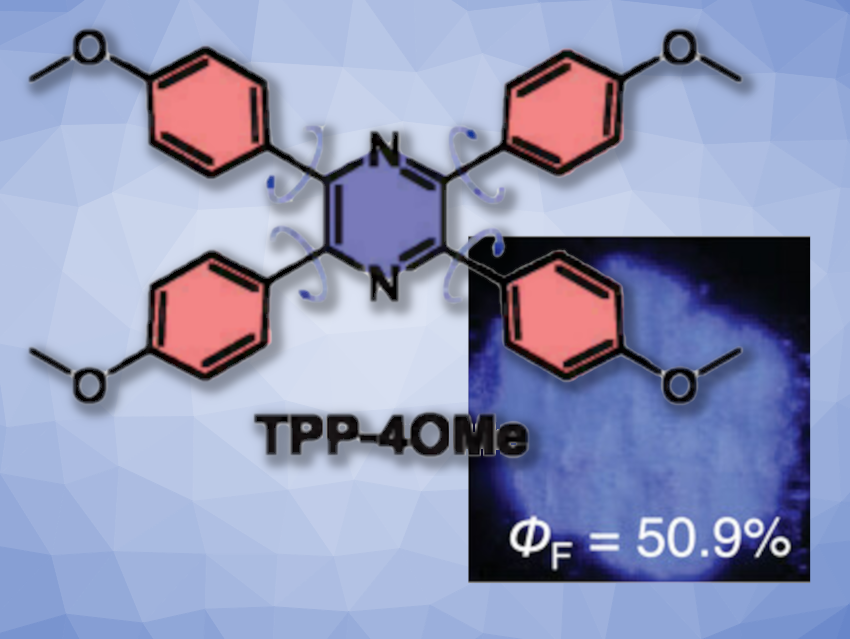Organic luminescent materials are useful due to their good processability and the ease of controlling their properties through molecular design. However, obtaining “ideal” blue organic light-emitting materials can still be challenging. For instance, most blue light-emitting molecules are polycyclic aromatic compounds, which tend to π-π stacking in the aggregated state, leading to an emission-quenching effect. In addition, the emission spectra of these compounds are often broad in the aggregate, and the stability of organic luminescent materials could often be improved compared with their inorganic counterparts. Thus, the development of blue organic light-emitting materials with high luminescence efficiency in the aggregated state, narrow emission spectra, and excellent stability is an interesting research target.
Xianguang Yang, Jinan University, Guangzhou, China, and colleagues have prepared a tetraphenylpyrazine (TPP)-based aggregation-induced emission (AIE) luminogen, TPP-4OMe (pictured). TPP-4OMe was synthesized via a condensation reaction involving anisoin and ammonium acetate in the presence of acetic anhydride and acetic acid. The resulting crystalline powder of TPP-4OMe emits a deep-blue light at 435 nm with a narrow emission spectrum and has a high quantum yield (ΦF) of 50.9 %.
TPP-4OMe can be fabricated in the form of microfibers with good photostability. These microfibers can be used to create an active waveguide to transmit deep-blue emission signals with a very low optical loss coefficient. In the absence of UV light excitation, the microfibers can be used as a passive waveguide. When combined with green and red AIE dyes, the deep blue emission can be used to generate white light.
- Light‐up the white light emission in microscale with a superior deep‐blue AIE fiber as wave‐guiding source,
Hao Rao, Zicheng Liu, Ming Chen, Canze Zheng, Liping Xu, Junkai Liu, Jacky W. Y. Lam, Baojun Li, Xianguang Yang, Ben Zhong Tang,
Aggregate 2023.
https://doi.org/10.1002/agt2.453


![Synthesis of [c2]Daisy Chains via Mechanochemistry](https://www.chemistryviews.org/wp-content/uploads/2025/04/202504_RotaxanesWithSolidStateMechanochemistry-125x94.png)

